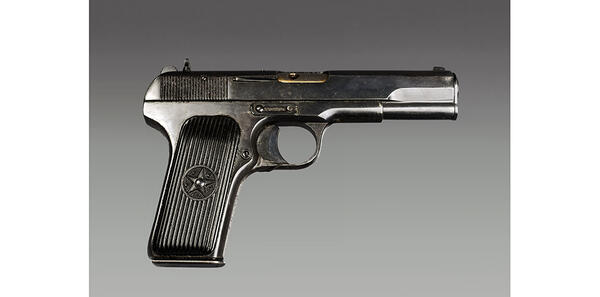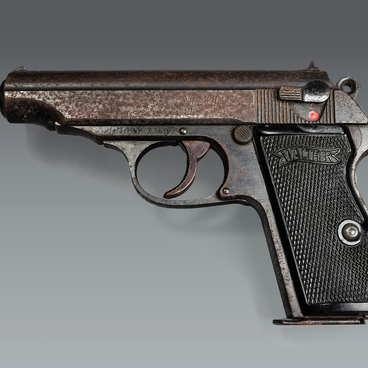The TT pistol М1933 was the first military semiautomatic pistol in the USSR. It was designed by Fedor Tokarev for the 1929 competition. The Soviet command held it to replace the Nagant revolver and other foreign-made guns in service in the Red Army with domestic ones.
The TT was worked on by a design team led by the Tokarev in the design bureau of the Tula Arms Plant. This is where its name came from: TT stands for ‘Tula Tokarev’.
On February 12, 1931 the USSR Revolutionary Military Council ordered the first batch of 1000 pistols for extensive military testing. In the same year the TT was accepted for service under the official designation ‘7.62 mm automatic pistol of 1930’. It was simple and technologically advanced in production and operation.
Several thousand copies of the TT were produced in 1930-1932. To improve manufacturability, the weapon was modernized in 1932-1933. The milling of the muzzle protrusions was replaced by a lathe machining. The frame was made in one piece, without a removable grip cover. The disassembler and trigger pull were also reworked.
In 1939 the design team headed by Tokarev developed one more variation of the gun with heavier grip and 12-round magazine. This way the probability of accidental firing was considerably decreased.
Further refinement of the pistol was prevented by the Great Patriotic War. At the end of 1941 the equipment for TT production was evacuated to Izhevsk. During 1942 over 150.000 Tokarev pistols were produced at Izhevsk machine factory No. 74. Also, in 1942 the factory produced a small batch of TT with double-row 15-round magazine.
In 1947 the weapon was modified again to reduce its cost. And the new powerful cartridge, atypical for pistols, provided extremely high penetration. The TT had a short, light trigger and ensured considerable accuracy. An experienced shooter could hit the target at ranges over 50 meters. The flat and fairly compact pistol was comfortable to carry.
The TT was worked on by a design team led by the Tokarev in the design bureau of the Tula Arms Plant. This is where its name came from: TT stands for ‘Tula Tokarev’.
On February 12, 1931 the USSR Revolutionary Military Council ordered the first batch of 1000 pistols for extensive military testing. In the same year the TT was accepted for service under the official designation ‘7.62 mm automatic pistol of 1930’. It was simple and technologically advanced in production and operation.
Several thousand copies of the TT were produced in 1930-1932. To improve manufacturability, the weapon was modernized in 1932-1933. The milling of the muzzle protrusions was replaced by a lathe machining. The frame was made in one piece, without a removable grip cover. The disassembler and trigger pull were also reworked.
In 1939 the design team headed by Tokarev developed one more variation of the gun with heavier grip and 12-round magazine. This way the probability of accidental firing was considerably decreased.
Further refinement of the pistol was prevented by the Great Patriotic War. At the end of 1941 the equipment for TT production was evacuated to Izhevsk. During 1942 over 150.000 Tokarev pistols were produced at Izhevsk machine factory No. 74. Also, in 1942 the factory produced a small batch of TT with double-row 15-round magazine.
In 1947 the weapon was modified again to reduce its cost. And the new powerful cartridge, atypical for pistols, provided extremely high penetration. The TT had a short, light trigger and ensured considerable accuracy. An experienced shooter could hit the target at ranges over 50 meters. The flat and fairly compact pistol was comfortable to carry.



